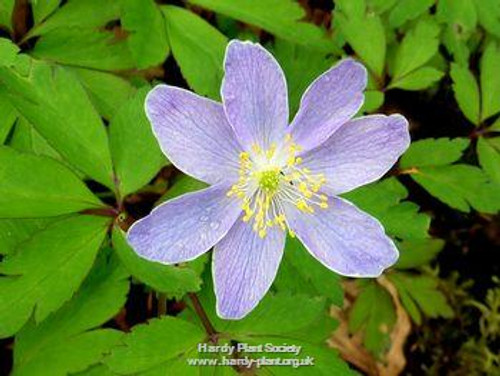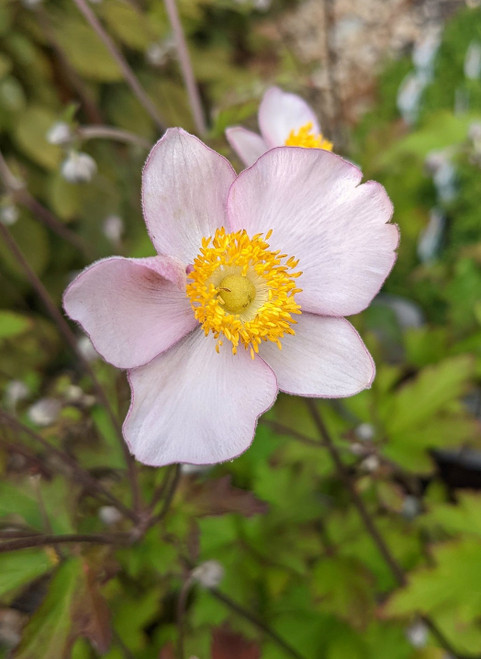Plant Overview
This lovely native wildflower of open woodland and shady margins has starry off-white flowers waving above low dark foliage in spring.
Anemone nemorosa's flowering period overlaps with native Bluebells and they look wonderful planted together.
Good for underplanting trees and shrubs. Will slowly colonise an area to create a carpet. Flowers in March and April.
Height: 20cm
Common names: Wood Anemone; Bowbells; Bread and cheese and cider; Chimney Smocks; Crowfoot; Easter flower; Granny's Nightcap; Granny-thread-the-needle; Lady's Purse; Lady's Shimmy; Moll of the Woods; Moon flower; Nancy; Smell Smocks; Shame Faced Maiden; Smell Fox; Soldiers Buttons; Star of Bethlehem; White Soldiers; Windflower.
Anemone:
The sight of a carpet of white stars on a sunny day is a true sign that spring has sprung. The spring flowers are a useful source of food for sleepy foraging bees. Wood Anemones look best on-masse so if possible, plant several in a clump and for the first couple of years increase the collection for free by dividing the rhizomes.
Any shady spot will support a happy colony of Anemone, so even if you have a city garden, you can plant them in a border that's shaded by a building. Add a bucket or two of leaf-mould to the soil before planting and don't add any fertiliser.
We have several varieties of anemone available, use the search box above to explore.
History and Tradition
Anemones used to be called windflowers, perhaps because they grew in areas of wind; the Greek word anemos means 'wind. For the gardener the appearance of the little white flower heralds the start of spring. It has from classical times been a favourite for making up chaplets and garlands.
In mythology, Anemone was a nymph beloved by Zephyr, the god of the west wind. This aroused the jealousy of the goddess Flora, who banished Anemone from court
Pliny describes anemones as daughters of the wind, which would only open their flowers when the wind was blowing, an allusion which has led to it being named 'windflower. In Staffordshire it was often known as 'thunderbolt, as picking it was supposed to cause thunderstorms. It is said that when the anemone closes its petals rain is on the way. Traditionally it is thought to be a plant of luck and a protection against evil.
To dream of anemones suggests that your lover is unfaithful and should be spurned in favour of another.
In folk medicine wood anemones were used to treat headaches. Poultices containing the plant leaves were pressed to the head as a cure.
Please note that depending on the time of year, anemones may have been recently repotted when you receive them. When not in leaf, these plants are dormant as small rhizomes under the soil (see photograph two for an example). They can be planted at any time, dormant or not. As with many plants, the depth of colour can change depending on light levels, soil ph and other factors. We deliberately allow moss/liverwort to grow in Anemone pots because it helps to protect the rhyzomes and we do not remove it before sending the plants out. Simply plant the Anemone with the moss intact and the Anemone will continue to grow through it.
Photo 1: Lilly M, CC BY-SA 3.0, via Wikimedia Commons












